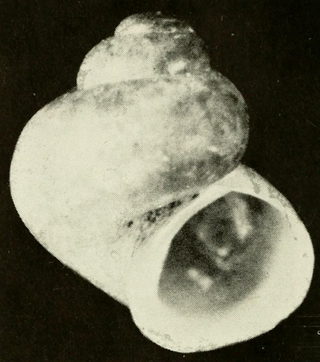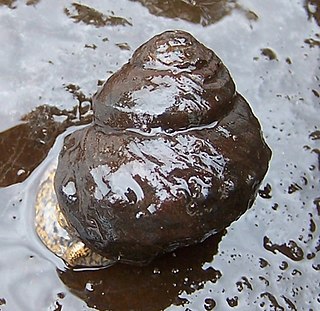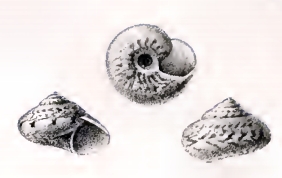
The shoal sprite was a species of minute, air-breathing, freshwater snail, an aquatic pulmonate gastropod mollusk in the family Planorbidae, the ram's horn snails. This species was endemic to Alabama, but it is now extinct.

Amphigyra is a genus of air-breathing freshwater snail, an aquatic pulmonate gastropod mollusk in the family Planorbidae, the ram's horn snails.

The Cahaba pebblesnail, scientific name Clappia cahabensis, is a species of very small freshwater snail, aquatic gastropod mollusks in the family Lithoglyphidae.

Clappia is a genus of small freshwater snails that have an operculum, aquatic gastropod mollusks in the family Lithoglyphidae.

Neoplanorbis is a genus of small, freshwater, air-breathing snails. They are aquatic pulmonate gastropod mollusks in the family Planorbidae, the ram's horn snails.

Neoplanorbis tantillus is a species of very small air-breathing freshwater snail, an aquatic gastropod mollusk in the family Planorbidae, the ram's horn snails. This species is endemic to the United States. In 2012, it has been declared extinct by the IUCN Red List of Threatened Species.
Somatogyrus is a genus of very small freshwater and brackish water snails that have an operculum, aquatic gastropod micromolluscs in the family Lithoglyphidae.

Tulotoma magnifica, common name the Alabama live-bearing snail or tulotoma, is an endangered species of large freshwater snail, an aquatic gastropod mollusk in the family Viviparidae.

Ariophanta laevipes is a species of air-breathing land snail, a terrestrial pulmonate gastropod mollusc in the family Ariophantidae.
Amnicola walkeri, common name Canadian duskysnail, is a species of freshwater snail, an aquatic gastropod mollusk in the family Amnicolidae.

Canariella hispidula is a species of small, air-breathing land snails, terrestrial pulmonate gastropod mollusks in the family Canariellidae, the hairy snails and their allies.

Anadema macandrewii is a species of sea snail, a marine gastropod mollusk in the family Colloniidae,

Lunella ogasawarana is a species of sea snail, a marine gastropod mollusc in the family Turbinidae, the turban snails.

Tegula rustica is a species of sea snail, a marine gastropod mollusk in the family Tegulidae.

Ilanga laevissima is a species of sea snail, a marine gastropod mollusk in the family Solariellidae.

Spectamen semireticulatum is a species of sea snail, a marine gastropod mollusc in the family Solariellidae.

Astele scitula is a species of sea snail, a marine gastropod mollusk in the family Calliostomatidae.

Homalopoma tapparonei is a species of small sea snail with calcareous opercula, a marine gastropod mollusk in the family Colloniidae.






















